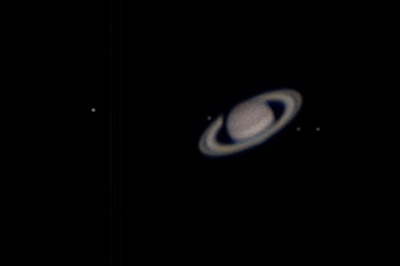 |
| The red planet Mars -two images taken with the QHY5-11 planetary camera and a Televue 3x Barlow lens attached to the 127mm Meade Apo Refractor. Credit: Kurt Thrust. |
Prior to imaging Mars we captured some video clips of Saturn as it skimmed across the Observatory's southern horizon. To finish the evening we turned the telescope towards the distant ice giant Uranus which, although much much larger than Mars, appeared tiny in the dark reaches of space". - Kurt Thrust current Director of the Jodrell Plank Observatory
 | |
|
 |
| The tiny blue dot that is Uranus in its orbit beyond Saturn. Captured with the QHY5-11 colour planetary camera, Televue 3x Barlow lens attached to 127mm Meade Apo Refractor. Credit : Kurt Thrust |
No comments:
Post a Comment